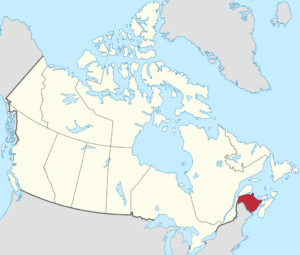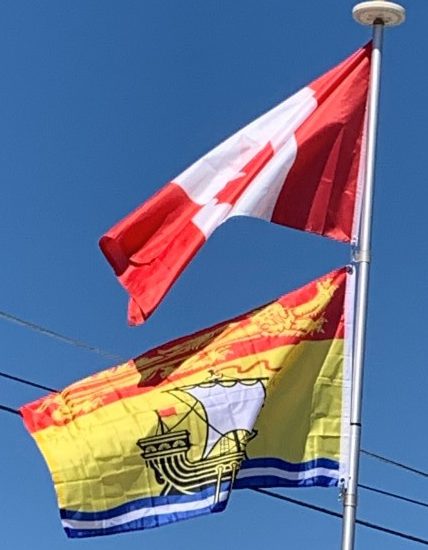Introduction:
New Brunswick is one of four Atlantic provinces on the east coast of Canada. According to the Constitution of Canada, New Brunswick is the only bilingual province. About two-thirds of the population declare themselves anglophones, and one third francophones. One-third of the population describes themselves as bilingual. Atypically for Canada, only about half of the population lives in urban areas, mostly in Greater Moncton, Greater Saint John and the capital Fredericton.
Unlike the other Maritime provinces, New Brunswick’s terrain is mostly forested uplands, with much of the land further from the coast, giving it a harsher climate. New Brunswick is 83% forested and less densely-populated than the rest of the Maritimes.

Being relatively close to Europe, New Brunswick was among the first places in North America to be explored and settled by Europeans, starting with the French in the early 1600s, who displaced the indigenous Mi’kmaq, Maliseet, and the Passamaquoddy peoples. The French settlers were later displaced when the area became part of the British Empire. In 1784, after an influx of refugees from the American Revolutionary War, the province was partitioned from Nova Scotia. In 1785 Saint John became Canada’s first incorporated city. The province prospered in the early 1800s and the population grew rapidly, reaching about a quarter of a million by mid-century. In 1867, New Brunswick was one of four founding provinces of the Canadian Confederation, along with Nova Scotia and the Province of Canada (now Ontario and Quebec).
After Confederation, wooden shipbuilding and lumbering declined, while protectionism disrupted trade ties with New England. The mid-1900s found New Brunswick to be one of the poorest regions of Canada, now mitigated by Canadian transfer payments and improved support for rural areas.
Tourism accounts for about 9% of the labor force directly or indirectly. Popular destinations include Fundy National Park and the Hopewell Rocks, Kouchibouguac National Park, and Roosevelt Campobello International Park. In 2013, 64 cruise ships called at Port of Saint John carrying on average 2600 passengers each.
History:
Early History:
Indigenous peoples have been in the area since about 7000 BC. At the time of European contact, inhabitants were the Mi’kmaq, the Maliseet, and the Passamaquoddy. Although these tribes did not leave a written record, their language is present in many place names, such as Aroostook, Bouctouche, Petitcodiac, Quispamsis, and Shediac.
New Brunswick may have been part of Vinland during the Norse exploration of North America, and Basque, Breton, and Norman fishermen may have visited the Bay of Fundy in the early 1500s.
European Settlements:
French Colony:
The first documented European visits were by Jacques Cartier in 1534. In 1604, a party including Samuel de Champlain visited the mouth of the Saint John River on the eponymous Saint-Jean-Baptiste Day. Now Saint John, this was later the site of the first permanent European settlement in New Brunswick. French settlement eventually extended up the river to the site of present-day Fredericton. Other settlements in the southeast extended from Beaubassin, near the present-day border with Nova Scotia, to Baie Verte, and up the Petitcodiac, Memramcook, and Shepody Rivers.
